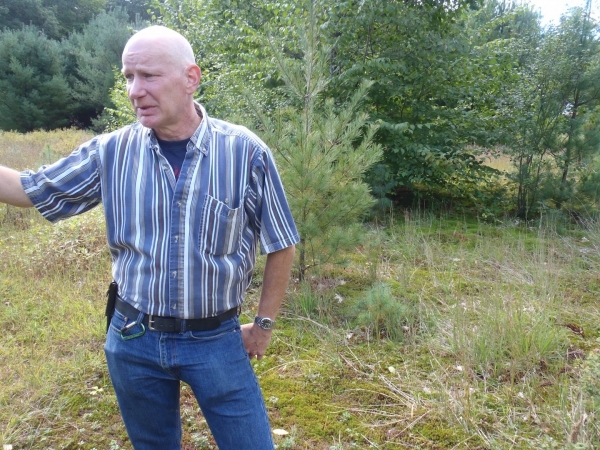NEWFANE — In October 2014, voters in Newfane and Brookline approved a major energy transformation at the joint NewBrook Elementary School.
One part of that project - installation of a sophisticated new heat-pump system - is finished. But an accompanying 500-kilowatt solar facility is in limbo due to its California-based developer, SunEdison, seeking Chapter 11 bankruptcy protection.
While school officials say they're still hopeful the photovoltaic array will be built on school property, they're concerned about SunEdison's ability to meet an end-of-year deadline tied to potential changes in the state's net-metering program.
By this time, officials had expected construction to be under way.
“NewBrook's Energy Committee is closely monitoring the situation and working hard to ensure a positive outcome for the school and taxpayers,” Ken McFadden, chairman of the Brookline-Newfane Joint School Board, wrote in a recent letter posted on the school website.
In late April, SunEdison's now-departed chief executive officer sent the school a letter saying he anticipated that “work will proceed as planned on our ongoing projects.” But a SunEdison spokesman wasn't able to provide an update on the NewBrook project when contacted last week.
Officials say the school's energy upgrades were driven in part by necessity: NewBrook's heating system was uneven and inefficient, with an aging boiler that could consume three gallons of oil per hour.
Voters approved spending up to $330,000 on an air-to-air heat pump system. Installation began in summer 2015 and continued throughout the fall, with the school using a new, propane-fueled backup boiler system to heat the school until the heat pump setup was ready in early 2016.
McFadden said the new system makes a big difference both in cold and hot weather - and without the use of oil. “We're very happy with it,” he said. “It's been amazing.”
Along with the heat pump project, NewBrook's Energy Committee also had spent years developing plans for a 500-kilowatt solar array to be constructed in a currently unused field behind the school. The idea is for the school to participate in an educational green-energy project while also benefiting from reduced utility bills under the state's net-metering program.
NewBrook voters initially turned down the solar plans in June 2014, then approved them four months later when the board modified the proposal so that it included no financial commitment from the district.
In October 2015, NewBrook approved a solar-development contract with SunEdison. Some preparatory site work happened late in the year, but SunEdison in April announced that it was seeking Chapter 11 protection.
At the time of that filing, SunEdison billed itself as a leading renewable energy company with more than 2,000 employees and 30 locations in North America, Europe and Asia. A SunEdison executive called the filing “a difficult but important step to address our immediate liquidity issues” while “transforming the company into a more streamlined and efficient operator.”
What that means for NewBrook's project is anybody's guess, as school officials haven't gotten firm answers on a project that was supposed to get under way this year.
A June 30 letter from McFadden posted on the school's website said information received from SunEdison and a local attorney “indicates that the school's solar project will proceed as specified in our contract.” The NewBrook Energy Committee has been meeting regularly since April to discuss the situation, McFadden added.
In a recent interview, McFadden said the situation has remained unclear as “our lawyers are talking to their lawyers.” McFadden, who also serves on the Energy Committee, speculated that SunEdison might find a way to build the NewBrook array or might try to sell the project to another developer.
One way or another, “they need to start moving,” McFadden said. “I've been saying this for a long time.”
The urgency stems from the fact that the state's net-metering rules are set to change on Jan. 1, 2017. While the Public Service Board still is finalizing the details of those changes, it's expected that the new rules will lower rates for power produced by net-metered projects like NewBrook's proposed array.
A new, lower rate would affect the NewBrook array's financials, possibly making it less lucrative for the school and less feasible for the developer. In order to ensure the current net-metering rate, McFadden said, NewBrook's solar developer must apply for a state certificate of public good by Dec. 31.
In spite of the logistical troubles, McFadden still believes in the potential of solar power at NewBrook.
In addition to the anticipated utility bill savings, the school is slated to receive a $26,000 annual lease payment from the array's owner. Also, officials have said there should be enough power produced for other schools, municipalities and private citizens to sign on to a group net-metering agreement.
And those benefits theoretically are not far off. Once work begins, “it doesn't take long to prepare the site,” McFadden said. “It won't take long at all to put one up of that size.”
No matter what happens, McFadden said he wants taxpayers to know they're not on the hook for any costs associated with the solar project.
“We've put zero money up,” he said. “If worse comes to worst, we won't have a solar field, and that's it. And we'll still have switched to a cleaner way of heating the building.”
